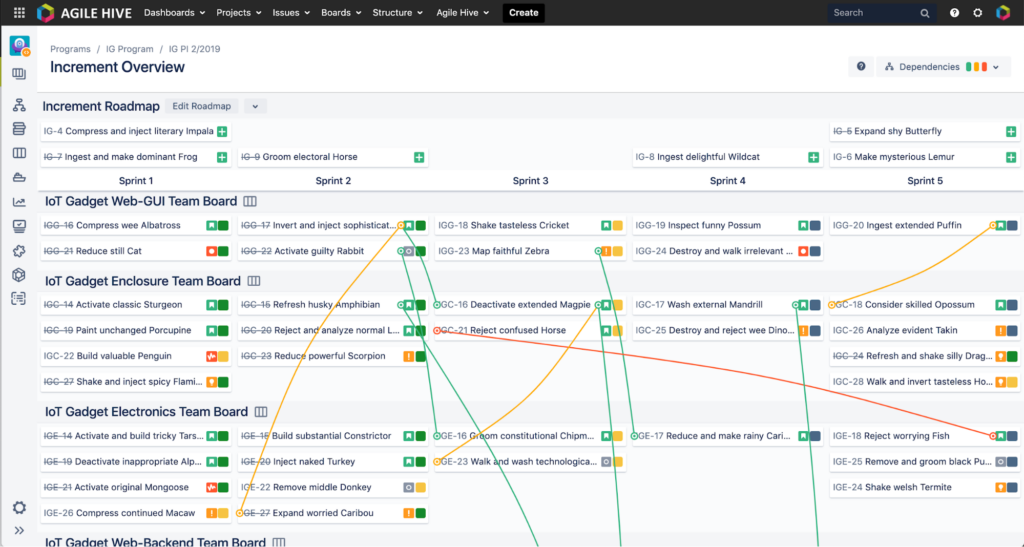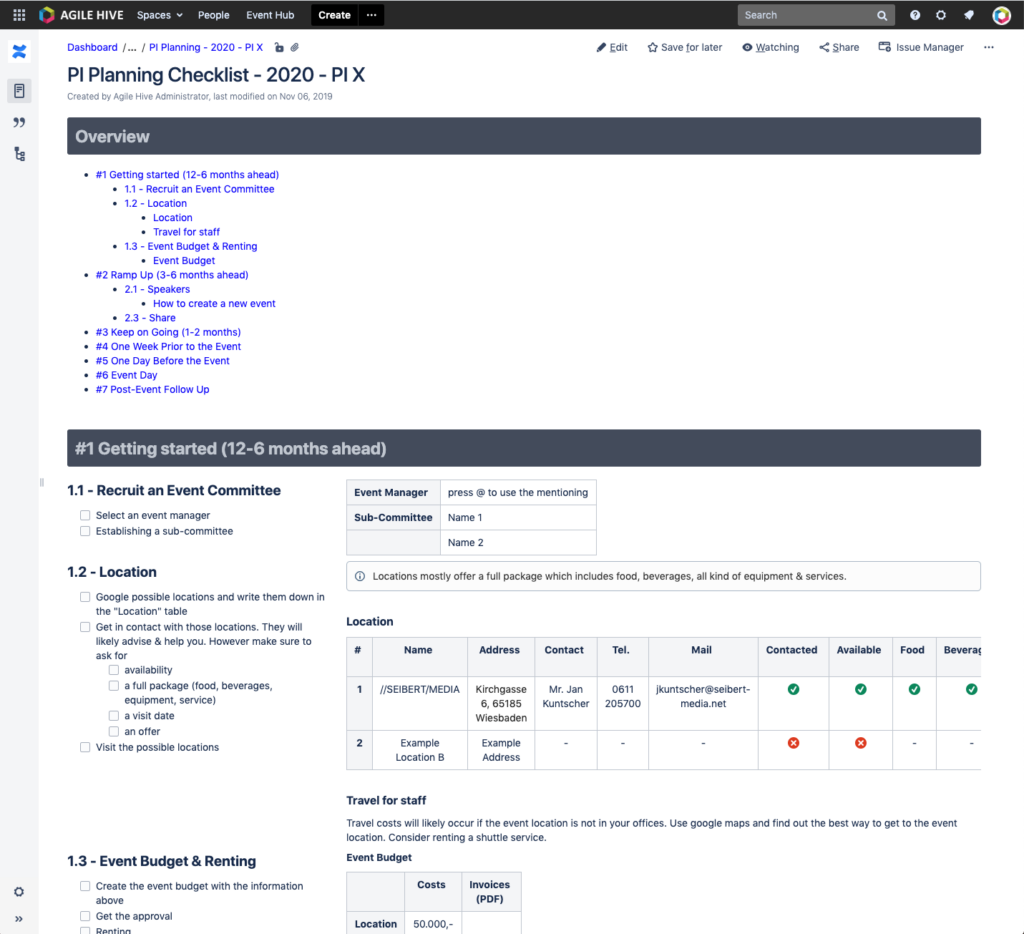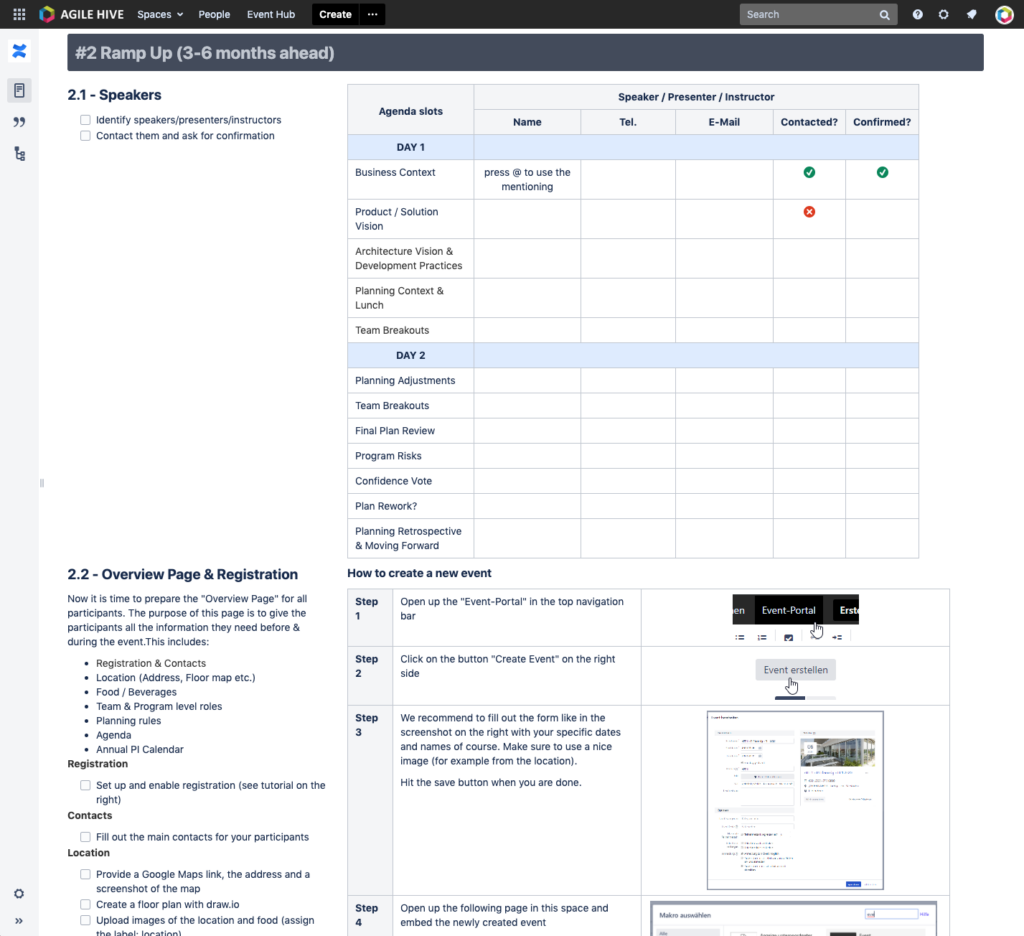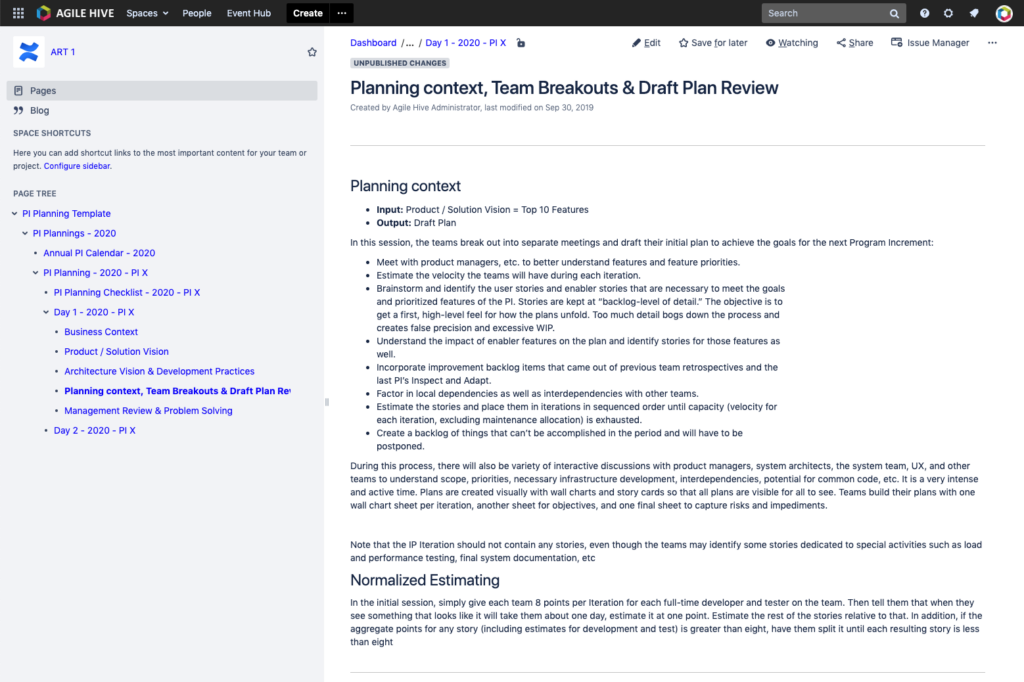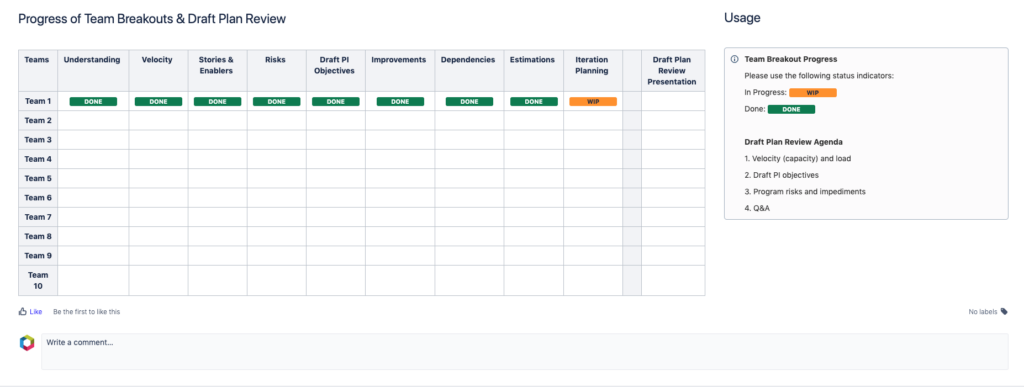The COVID-19 (Corona) virus is forcing agile communities to consider adopting a course of action we would normally reject: to avoid meeting in person when possible, especially with regards to gathering in big crowds. Under these circumstances, we must rethink strategies such as Program Increment (PI) Planning, a critical element of the Scaled Agile Framework (SAFe®). SAFe® focuses on people-centric alignment of strategy with execution, emphasizing team-based collaboration and putting the Agile in “Scaled Agile Framework”. This unique situation we find ourselves in affects the very essence of PI strategy.
Under normal circumstances, we remain convinced that collaborating in person is the most effective way of working together. As one of the principles in the Agile Manifesto says:
“The most efficient and effective method of conveying information to and within a development team is a face-to-face conversation.”
However, we’ve learned from our customers that there have always been practical constraints on making this happen. Gathering their teams regularly in the same physical space to work as part of an Agile Release Train requires a great deal of resources. Agile could argue: Prioritizing having teams work in the same physical space and making joint PI-Plannings possible, is crucial for scaled agile product development. We tend to agree.
However, in this new situation forces us to rethink these methods. We can’t only consider the methodological aspects of things because all of a sudden our neighbors’ wellbeing is at stake as well as our own. Compliance with authorities when they discourage or even prohibit meetings or business travel is essential.
When you’re ready to scale Agile, it’s important to have the right tools. Fostering an agile mindset among hundreds (or even thousands) of employees, empowering them to use agile methods requires strong digital support. For those of you who use SAFe® with Jira as your process management tool, we’ve given you Agile Hive to help your organization and your teams get the most out of Atlassian tools. This means you can execute SAFe® as easily and efficiently as possible.
Now, let’s talk about organizing partial or even completely remote PI Planning - whether it’s due to COVID-19 or any other hurdle that may prevent employees from meeting in person.
Agile Hive isn't currently optimized for live, realtime PI Planning - you’ll have to occasionally reload. Agile Hive focuses instead on thoroughly supporting SAFe® with Atlassian. Considering how collaboration is woven into the very framework of Jira and Confluence, Agile Hive can contribute a great deal in terms of making remote PI Planning worthwhile.
What do you need to start remote PI Planning with Agile Hive?
- Jira and Confluence software for all members and (active) stakeholders of the Agile Release Train
- Agile Hive (AH; Jira App and Confluence content, installation, and setup)
- Video- and/or audio-conferencing tool and hardware setup of your choice (video recommended - so we can at least see each other)
- Chat / Messaging / Microblogging or similar written communication
- Communication concept for different settings, such as:
-
- the entire ART (plenum presentations / discussions)
- for the teams (if not collocated; for breakout sessions)
- for collaboration between teams (e.g. for dependency-clarifications)
- for collaborations of stakeholders and other roles with teams (e.g. business owners, RTE, Scrum Masters, …
-
- Tooltip: There are other Confluence tools that might come in handy, such as Microblogging for channel-based written conversations, Event management, Polls for gathering confidence votes - or even the social intranet Linchpin which fosters collaboration and communication on an enterprise level.
Execution recommendations
Preparation by Release Train Engineer / Event committee
- Use the AH PI Planning Checklist to plan the event step by step, substituting venue preparation with technical setup planning, for example:
- informing everyone about the new situation (and even before that: defining “everyone”), gathering ideas and concerns early in order to ensure an efficient meeting with a positive and patient crowd
- test communication gear for big, busy meetings days thoroughly and well ahead, ensure internet connectivity, have backup plans (e.g. mobile hotspots), guarantee high availability and performance of systems (we are working on AH Data Center approval) and consider the new working situations of individuals (e.g. working from a home office) and what the need (e.g. VPN-connections)
- Send out invitations to all employees, including information on the new situation
- Tooltip: For event management, use Linchpin Events right out of Confluence: this way you’re sharing all necessary information centralized on one Confluence page; this enables you to track attendees and manage possible concerns - gathered as comments or as entries in the Microblog
In the following example, we’d like to clarify some of these ideas using this example Day 1 Agenda - since Day 2 follows the same communication patterns in the same groups.
Day 1 Agenda
- Business context, Product/solution vision, Architecture vision and development practices, and Planning context
- All content, concepts, and ideas involved can be prepared as a group by the appropriate people of a given designated PI-Confluence Space of AH. After they present via video conference, everyone on the Train can review and comment on the video for the entire duration of the planning period and even the upcoming PI.
- Lunch: Hmm, sorry, Agile Hive can't really contribute anything here - maybe you can share pizza service recommendations?
- Team breakouts #1:
- The teams (via video-conferencing, if distributed) plan their workload, they break down features into estimated stories, and create their draft plans - putting everything together in one interactive digital place: the AH PI-Roadmap and Team Planning Board
- teams can identify and visualize inter-team dependencies, presented as Jira links
- identified risks can be documented as issue types to be addressed (roam'ed), always visible in easy-to-read team reports. Just like the teams’ PI Objectives, which are also issues, they’re linked to their corresponding stories
- Draft plan review: the (digital) outcome of the first team breakouts is sort of a Program Board, showing aggregated data on capacity and load, and every dependency identified. Together with the AH reports’ risks and objectives, it’s the perfect visualization for a joint review and input-session.
- Management review and problem-solving: document all work, making it visible in AH, management can walk through risks and challenges easily, negotiate and resolve problems and make the necessary planning adjustments
Stay SAFe® out there and should you have any questions, suggestions, more ideas or your own experiences on how to approach agile during this time of COVID-19, we'd love to hear from you!
Further Information:
https://www.scaledagileframework.com/distributed-pi-planning/
https://seibert.biz/remotepiplanning
https://seibert.biz/inforemotecommunity
https://agile-hive.com/
https://linchpin-intranet.com/
https://calendly.com/agile-hive
